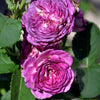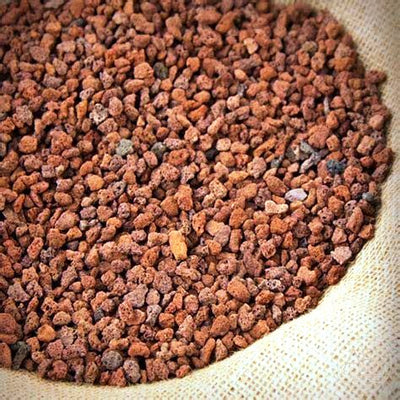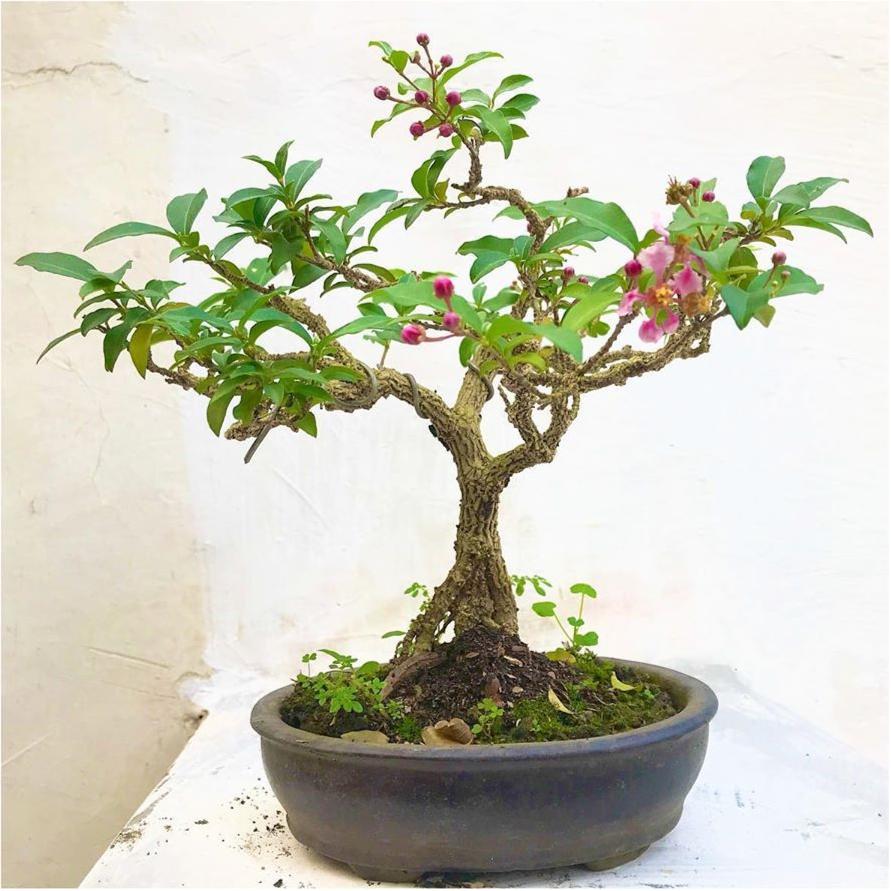
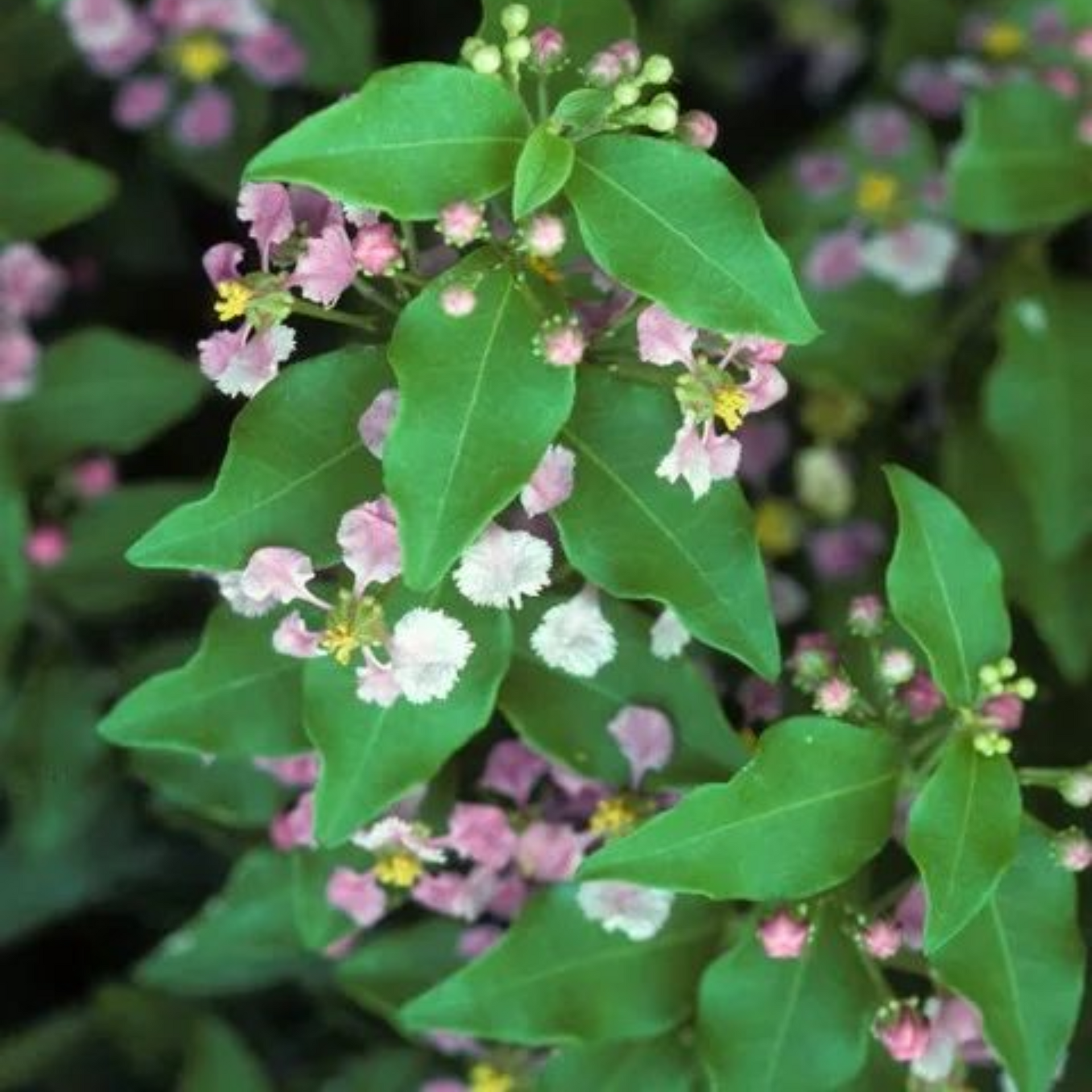
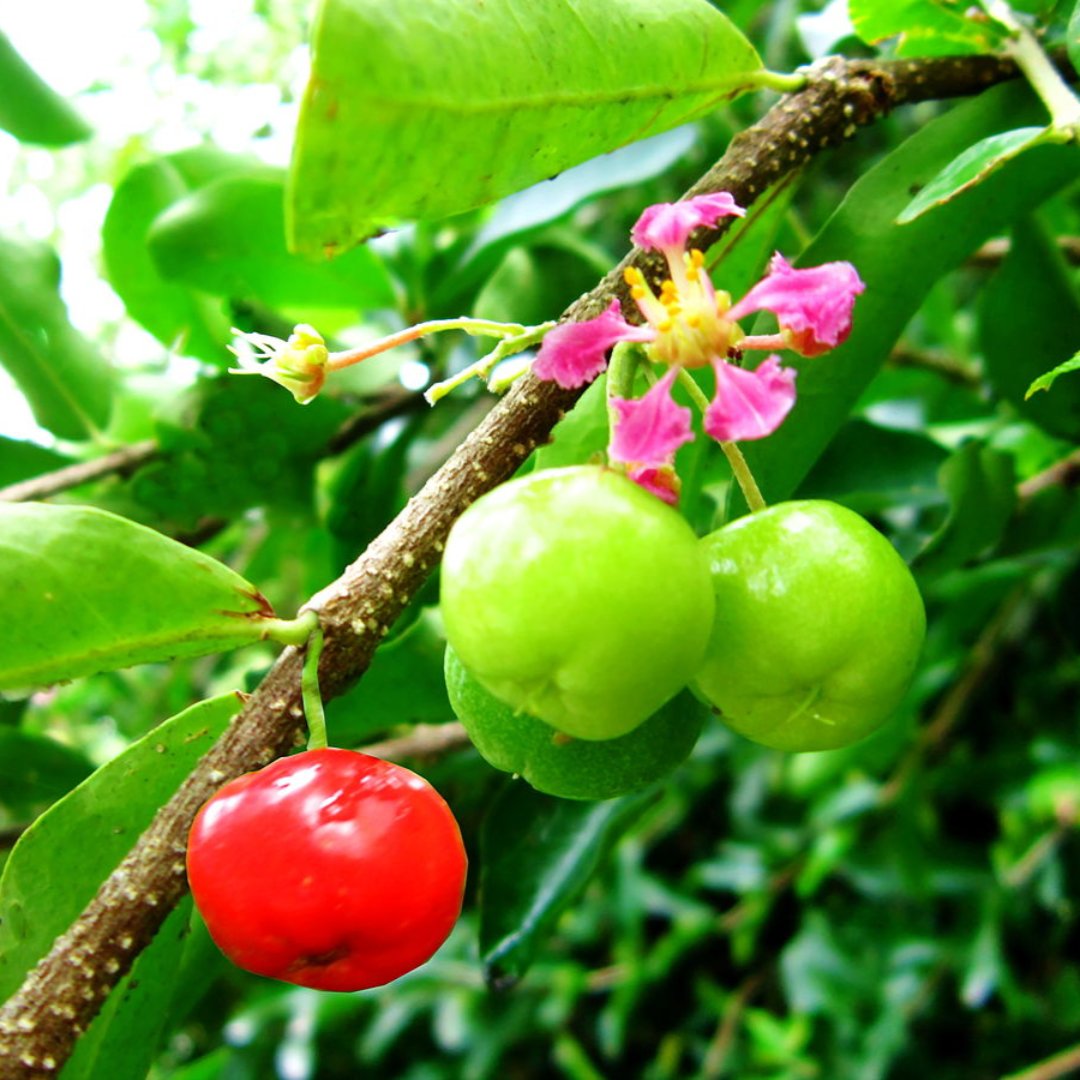
Malpighia punicifolia Dwarf Barbados Cherry bonsai live tree
No reviews
Rs. 2,499.00
Guaranteed Safe Checkout
Green Paradise Offers Bonsai
Dwarf Cherry Blossom Tree Malphighia
Punicifolia Plant
About Dwarf Barbados Cherry (Malphighia) Plant
The Dwarf Barbados Cherry (Malpighia glabra) is a popular choice for bonsai enthusiasts due to its small size, attractive flowers, and edible fruit.
Here's some information about the Dwarf Barbados Cherry bonsai plant:
Plant Description:
- The Dwarf Barbados Cherry is a tropical evergreen shrub native to the Caribbean, Mexico, and Central and South America.
- It has dense foliage with small, glossy, oval-shaped leaves that are dark green in color.
- The plant produces delicate, pinkish-white, five-petaled flowers that resemble small roses.
- These flowers are followed by small, round, cherry-like fruits that ripen to a vibrant red or orange color.
Size and Growth:
- As the name suggests, the Dwarf Barbados Cherry is naturally small in size, making it an ideal choice for bonsai cultivation.
- The plant typically grows to a height of around 2 to 4 feet (60 to 120 cm) when potted, with a spread of 1 to 3 feet (30 to 90 cm).
- It has a relatively slow growth rate, allowing for better control and shaping during bonsai training.
Dwarf Barbados Cherry Bonsai Care:
To successfully cultivate a Dwarf Barbados Cherry bonsai, it's important to provide the right care:
Light:
- These bonsai plants prefer bright, indirect sunlight.
- They can tolerate some direct sun, especially in the morning or evening, but dragged exposure to violent sun can scorch the leaves.
Temperature:
- The Dwarf Barbados Cherry thrives in warm temperatures ranging from 60°F to 85°F (15°C to 29°C).
- Protect it from frost and provide adequate humidity, especially in dry climates.
Watering:
- Keep the soil slightly wettish but avoid overwatering.
- Water the bonsai thoroughly when the top inch (2.5 cm) of soil feels dry, ensuring proper drainage to prevent waterlogging.
Soil and Fertilizer:
- Use a well-draining bonsai soil mix, such as a blend of akadama, pumice, and lava rock. Fertilize regularly during the growing season with a balanced, organic bonsai fertilizer to promote healthy growth and fruiting.
Pruning and Shaping:
- Regular pruning is necessary to maintain the desired shape and size of the bonsai.
- Trim back new shoots to encourage branching and remove any unwanted growth.
- Wiring can also be used to shape the branches gently.
Fruit and Edibility:
- One of the unique aspects of the Dwarf Barbados Cherry bonsai is its fruit production.
- The cherry-like fruits are small, measuring around 0.5 to 1 inch (1.3 to 2.5 cm) in diameter.
- They have a sweet- courtesan flavor and are rich in vitaminC.
- The fruits can be eaten fresh or used in various culinary applications, such as jams, jellies, and desserts.
Remember, when cultivating a bonsai, it's essential to have patience and commit to regular maintenance to achieve the desired aesthetic. With proper care and attention, your Dwarf Barbados Cherry bonsai can bring beauty and a touch of the tropics to your living space.
How To Grow Bonsai Barbados Cherry Plant
Growing a Dwarf Barbados Cherry bonsai plant can be a rewarding and enjoyable experience.
Then are some general guidelines to help you get started
Select a suitable plant:
- Look for a young Dwarf Barbados Cherry (Malpighia punicifolia) plant that has a compact and bushy growth habit.
- Ideally, choose a plant that is already trained as a bonsai or has the potential to be shaped into one.
Potting and soil:
- Use a well-draining bonsai pot with several drainage holes to prevent waterlogging.
- A mixture of bonsai soil, such as a blend of akadama, pumice, and lava rock, or a quality organic potting mix combined with perlite or sand, will work well for Barbados Cherry bonsai.
Pruning and shaping:
- Regular pruning is essential to maintain the asked shape and size of your bonsai.
- Start by removing any branches that are dead, broken, or in the way.
- Trim back new growth to maintain the desired compact form.
- Barbados Cherry responds well to pruning, so don't be afraid to be a little more aggressive if needed.
Wiring and shaping:
- Wiring can be used to shape the branches and create the desired bonsai form.
- Use bonsai wire of appropriate thickness, wrap it around the branches gently, and shape them by bending them into the desired position.
- Be careful not to damage the branches by applying too much pressure.
Watering and humidity:
- Barbados Cherry bonsai prefers slightly moist soil.
- Water your bonsai regularly, allowing the top layer of soil to dry out slightly between waterings.
- Avoid overwatering, as this can lead to root spoilage.
- Mist the leaves occasionally to maintain humidity, as Barbados Cherry enjoys a slightly humid environment.
Light and temperature:
- Barbados Cherry bonsai prefers bright, indirect light.
- Place your bonsai near a sunny window or provide artificial grow lights if natural light is insufficient.
- The Plant thrives in temperatures between 65 °F and 85 °F( 18 °C to 29 °C) but can tolerate slightly cooler temperatures for shortages.
Fertilization:
- Feed your Barbados Cherry bonsai with a balanced, water-soluble fertilizer during the growing season (spring to early fall) to provide essential nutrients.
- Follow the instructions on the toxin packaging for the correct lozenge and frequence.
Repotting:
- Repot your Barbados Cherry bonsai every two to three years during the spring before new growth appears.
- Trim some of the roots and replace the soil to ensure healthy growth.
- Trim back the foliage after repotting to reduce stress on the plant.
Pest and disease control:
- Monitor your bonsai regularly for pests like aphids, scales, or spider mites.
- Treat any infestations promptly using appropriate insecticides or natural remedies.
- Maintain adequate air circulation around the plant to prevent fungus diseases, and avoid overwatering to prevent root rot.
Patience and observation:
- Growing a bonsai is a long-term project that requires patience and observation.
- Regularly assess your bonsai's health, shape, and growth to make necessary adjustments and ensure its overall well-being.
Remember, bonsai care is an art form, and it's essential to adapt the techniques to the specific needs of your Barbados Cherry bonsai as it grows. Good luck with your bonsai cultivation!
𝗥𝗲𝗹𝗮𝘁𝗲𝗱 𝗽𝗿𝗼𝗱𝘂𝗰𝘁𝘀
Flowering Plants
Green Paradise Tabebuia rosea Pink Trumpet Tree
Green Paradise Offers Beautiful Tabebuia Rosea Pink Trumpet Tree About Tabebuia Rosea Pink Trumpet Tree Green Paradise Presents Beautiful Pink Flowered Tree Tabebuia Rosea. Easy Growing And Can be Grown...
Rs. 699.00
Rs. 449.00
Outdoor Plant
Green Paradise Dwarf Variety Green Coconut Plant
Green Paradise Offers Dwarf Variety Green Coconut Plant About Green Coconut Plant The dwarf variety of green coconut plants, also known as the dwarf coconut palm or Cocos nucifera...
Rs. 699.00
Rs. 499.00
Fruit Plants
Green Paradise Italian Lemon Fruit Live Plant
Green Paradise Offers Amazing And Most Easy To Grow Italian Lemon Plant About The Italian Lemon Plant Light The Lemon Tree thrives in full sun in a place that...
Rs. 399.00
Flowering Plants
Madhumalati Rangoon Creeper Double Petal Plant
Green Paradise Offers Beautiful Madhumalti Double Petal Rangoon Creeper Plant About Madhumalti Creeper The Madhumalti Creeper with Double Petals, also known as Rangoon Creeper (Scientific name: Quisqualis indica), is a...
Rs. 539.00
Rs. 399.00
Fruit Plants
Green Paradise Original Desi Lemon (Kagzi Lemon)Plant
Green Paradise Offers Original & Healthy Desi Lemon Plant About Desi Lemon Plant The Desi Lemon plant, scientifically known as Citrus limon, is a small to medium-sized tree...
Rs. 349.00
Flowering Plants
New rare Blue Hibiscuss Alyogyne huegelii live and healthy plant
Enchanting Elegance: Unveiling the Allure of the Green Paradise Blue Hibiscus Plant About Blue Hibiscus Plant Nature never ceases to amaze us with its boundless creativity, and the blue hibiscus...
Rs. 299.00
SOIL & FERTILIZERS
porous rocks for Soilmix In bonsai,succulents and adenium Plants 5kg pack
green Paradise porous rocks Provides High quality ingredients throughout, Good water-retention, Good drainage and Good aeration to the plants. porous rocks are Light Weight And used as a component of...
Rs. 649.00
Herbal And Medicinal Plants
Maghai Pan Nagarvel Betel Leaf Live Plant
Green Paradise Offers Maghai Pan (Betel Leaf) Plant About Maghai Pan Plant Maghai Paan (Betel leaf), also known as Piper beetle, is a perennial vine belonging to the Piperaceae family....
Rs. 349.00


